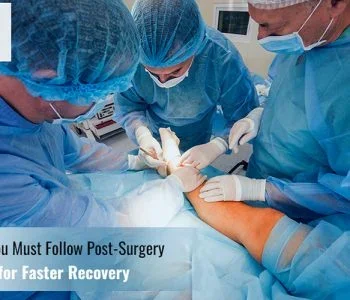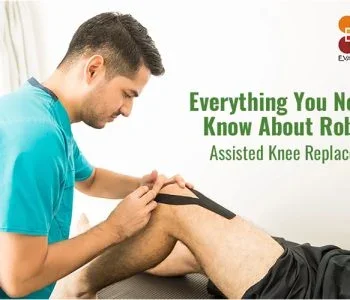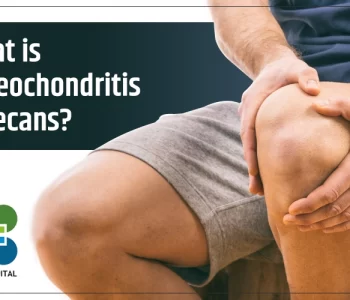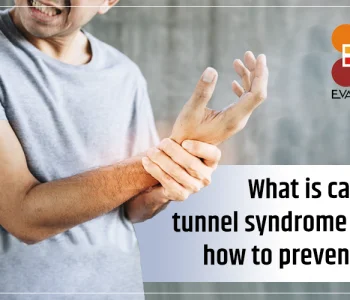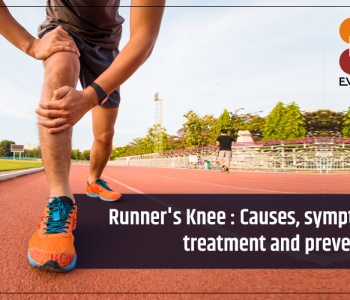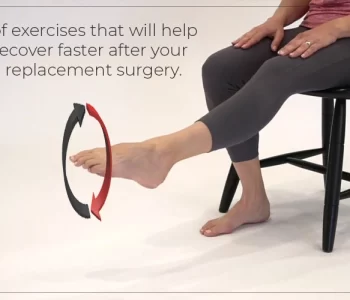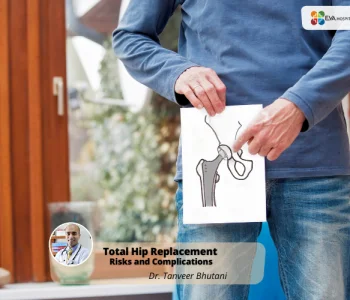Why Knee Pain Can Signal Other Health Problems?
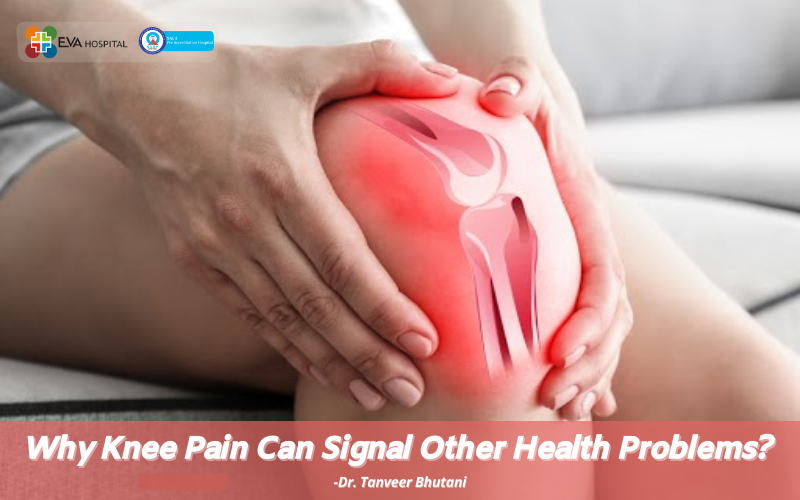 Eva Hospital
Eva Hospital
Why Knee Pain Can Signal Other Health Problems?
Although knee pain is localized in the leg joints, it gives you a signal about other health problems in your body you may not know of.
Whenever you have knee pain, take a thorough look and get yourself investigated to know the root cause of the problem. Your pain might be a consequence of one or a combination of the following health conditions:-
- An injury
- A mechanical problem
- Kinds of arthritis
- Other problems.
Knee Pain Could Signal an Internal/ External Injury
If you are experiencing knee pain it could be due to a recent or chronic injury such as :
- ACL tears
- Meniscus tear
- Fracture
- Bursitis
- Patellar tendinitis
Also Read: Post-Surgical Joint Replacement Precautions & Tips
You must understand the KNEE STRUCTURE and the terms. This joint joins the thigh with the leg and consists of two joints- the tibiofemoral joint & the patellofemoral joint.
The tibiofemoral joint is the one between the femur(thigh bone) and the tibia (shin bone). The patellofemoral joint is the one between the femur and patella ( knee cap).
The joints contain ligaments, tendons, and cartilage. It permits both flexion and extension along with slight internal & external rotation.
Your knee is vulnerable to injury, mostly affecting ligaments, tendons, or its fluid sacs or bursae that surround the joint. Let us give a look.
- ACL Tears. The ACL or the anterior cruciate ligament is one of four ligaments that connect the shinbone to the thigh bone. An ACL tear is a common sports injury in persons who indulge in sports such as basketball or soccer that require abrupt changes in direction.
- Fractures. Fracture pain is very acute, causes swelling and the patient cannot move the part. An accident or a fall can cause the patella or kneecap to break. Another reason for fracture can be severe osteoporosis. People with weak bones as a consequence of osteoporosis may fracture themselves simply by stepping wrong.
- Meniscus Tear. The tough, spongy cartilage that acts as a shock absorber between your shinbone and thighbone is the meniscus. You may tear it if you twist your leg the wrong way with a strong force or weight.
- Bursitis. There are small sacs of fluid called bursae that cover the knee all around to give the joint a cushioning. An inflammation in them is called bursitis and is painful.
- Patellar tendinitis. Tendinitis causes tenderness & inflammation in the tendons – the patellar tendon in this case. It is a fibrous tissue that connects your kneecap to the tibia and allows you to kick, run and jump. an injury to his tendon causes bursitis and eventual pain.
Mechanical Problems
The musculoskeletal structure is after all a piece of machinery, and any part can dislocate or behave in an unaligned way. Such mechanical problems may happen in the knee as well- causing pain. Some examples of mechanics problems include:
Loose body. Sometimes a piece of bone or cartilage might break off or float in the joint space. It could be the result of an injury or deterioration. It is something like an object being caught in a door hinge, not allowing it to close properly.
IT band Syndrome. IT Band is the tough band of tissue that stretches from the outside of your hip to the outside of your knee. When it becomes so firm that it rubs against the outer portion of the femur, it is called the Iliotibial Band Syndrome. Runners & cyclists are particularly susceptible to iliotibial band syndrome.
Kneecap Dislocation. This happens when the triangular bone that covers the face of your joint slips out of place, normally to the outside of the knee. In most cases, you are able to see the dislocation.
Hip or foot pain. Your pain might be connected to a problem in the hip or foot. Hip and foot pain usually makes you change your gait to save yourself from foot pain. Your altered way of walking puts more stress on your knee & causes pain.
Kinds of Arthritis
Maybe your knee pain is a signal for arthritis in the bones. There are several types of arthritic conditions. The most common ones are:
Osteoarthritis. Also known as degenerative arthritis, osteoarthritis is a wear-and-tear condition that occurs when the cartilage in the knee damages with use & age.
Rheumatoid arthritis. The most weakening form of arthritis, rheumatoid arthritis is an autoimmune condition that can affect any joint in the body, including the knees. It is a chronic disease, which keeps varying in severity. Also, it comes & goes.
Gout. This type of arthritis occurs due to uric acid deposits in the joint. While gout most commonly affects the big toe, it can also occur in the knee.
Septic arthritis. It occurs due to infection in the joints, causing swelling, pain, and redness.
